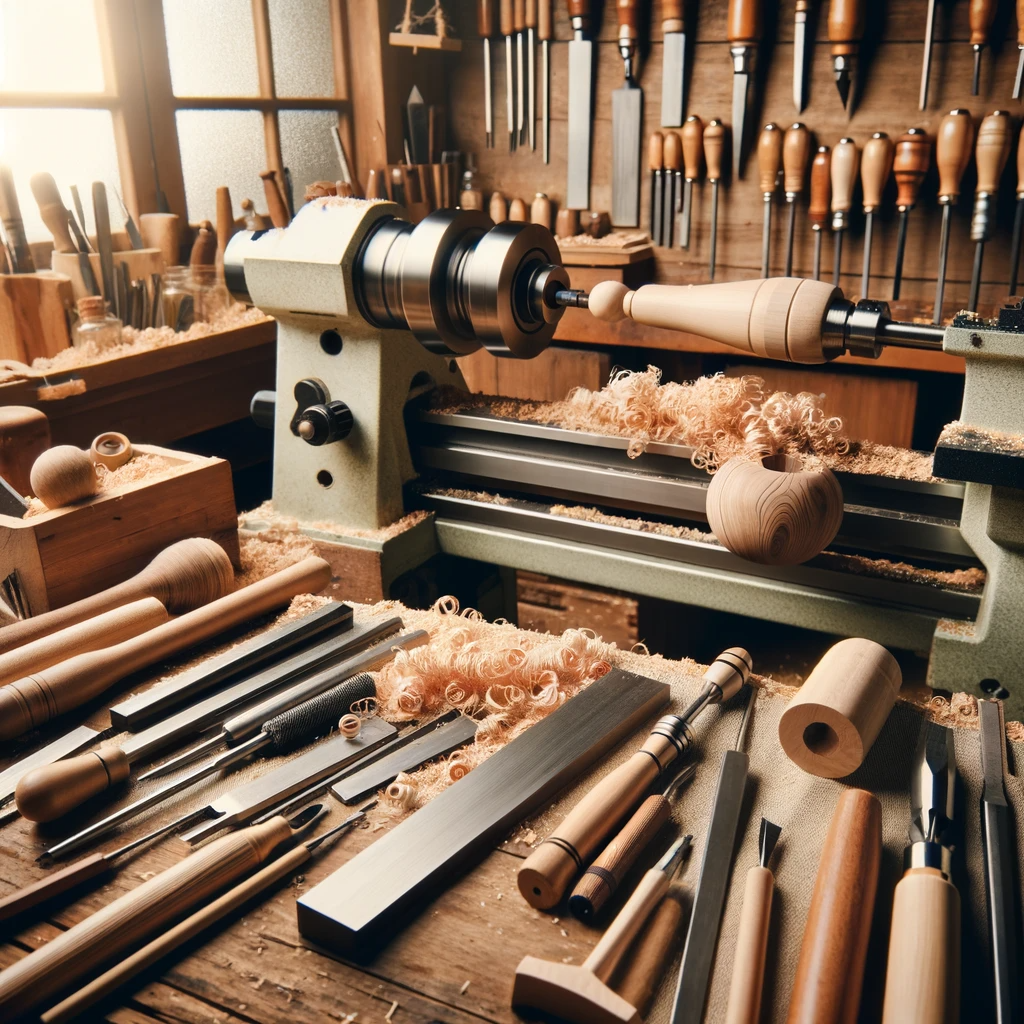Wood turning is a form of woodworking that uses a lathe to shape wood into desired forms. If you’re interested in getting started with wood turning, here are some essential tools you will need:
- Lathe: The most important tool for wood turning. It holds and spins the wood while you shape it with other tools. Lathes come in various sizes from small pen lathes to large bowl lathes.
- Chisels and Gouges: These are the tools that you’ll use to cut and shape the wood as it spins. Common types include spindle gouges, bowl gouges, parting tools, and skew chisels. Each has a specific purpose for different aspects of turning.
- Sharpening System: Sharp tools are crucial in wood turning for safety and precision. You’ll need a good sharpening system to keep your chisels and gouges sharp. This might include a grinder, honing stones, or a sharpening jig.
- Chuck: A chuck attaches to the lathe and holds your workpiece. It allows you to turn bowls or other objects that cannot be supported at the tailstock end of the lathe.
- Faceplate: For bowl turning and other workpieces that are not spindle-shaped, a faceplate can be used to secure the wood to the lathe.
- Safety Gear: Safety is paramount in all woodworking. Ensure you have proper safety glasses or a face shield, hearing protection, and dust mask or respirator.
- Calipers and Dividers: These measuring tools help you achieve precision in your work, allowing you to measure thicknesses and diameters accurately.
- Scraper: A scraper removes fine shavings of wood to smooth out the workpiece or shape fine details.
- Live Center and Drive Center: These fit into the headstock and tailstock of your lathe to hold and support the wood.
- Parting Tool: Used to cut a finished piece off of the lathe or to create a precise diameter on a workpiece.

Having the right tools is just the start; knowing how to use them safely and effectively is crucial to successful wood turning. It’s also recommended to start with some basic projects under guidance or with detailed instructions to get a feel for the process and techniques involved. As with any craft, practice and patience are key to developing your skills.

